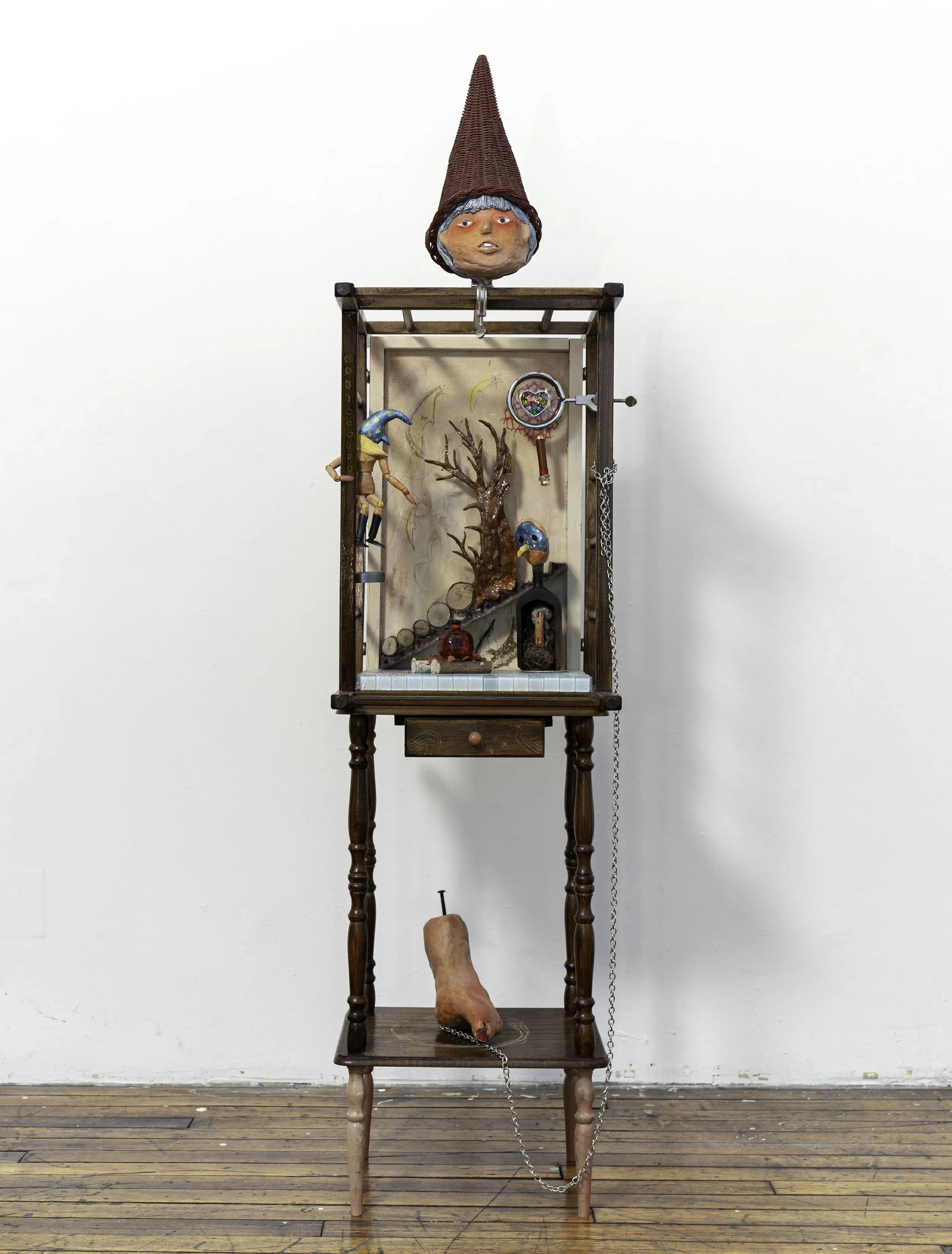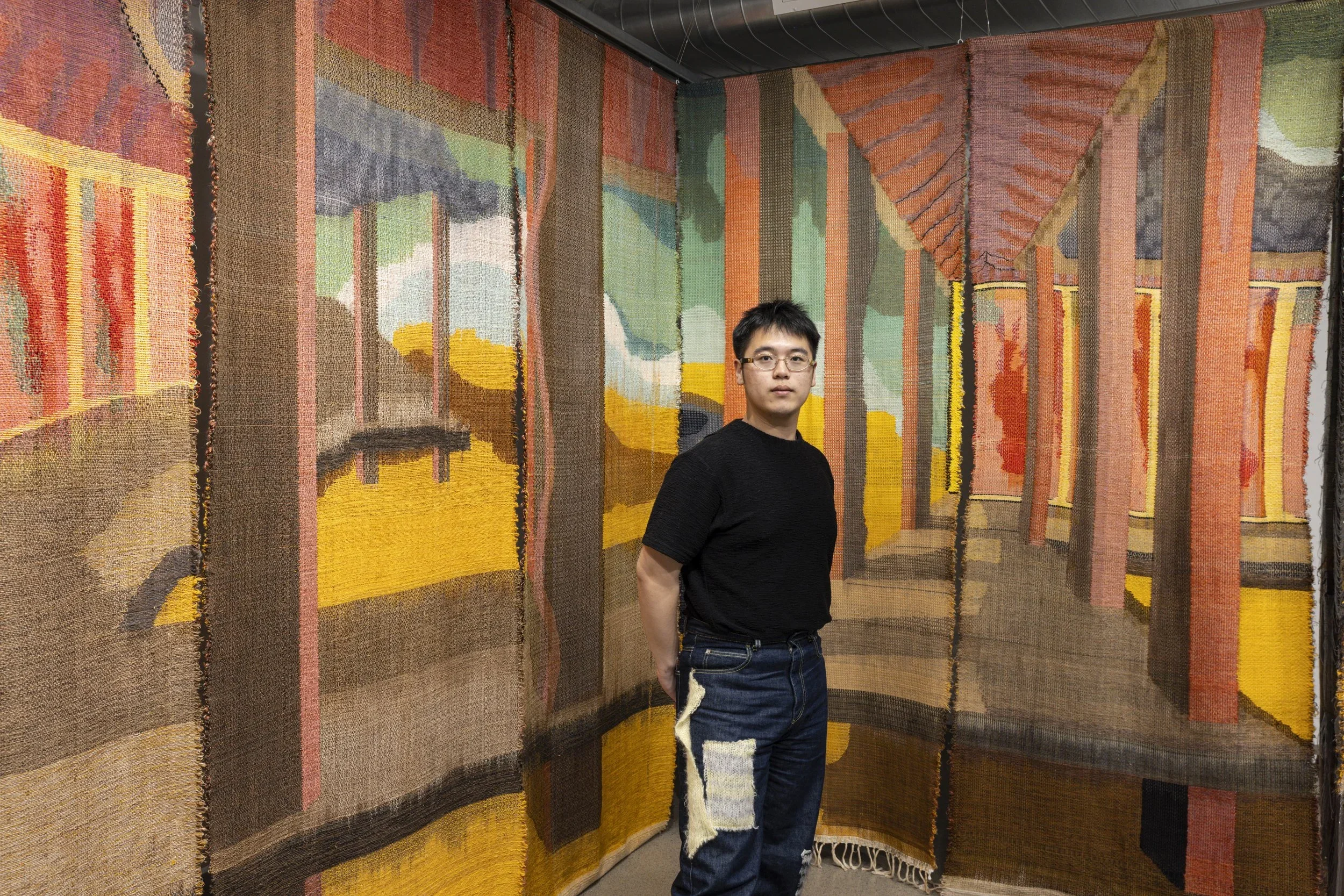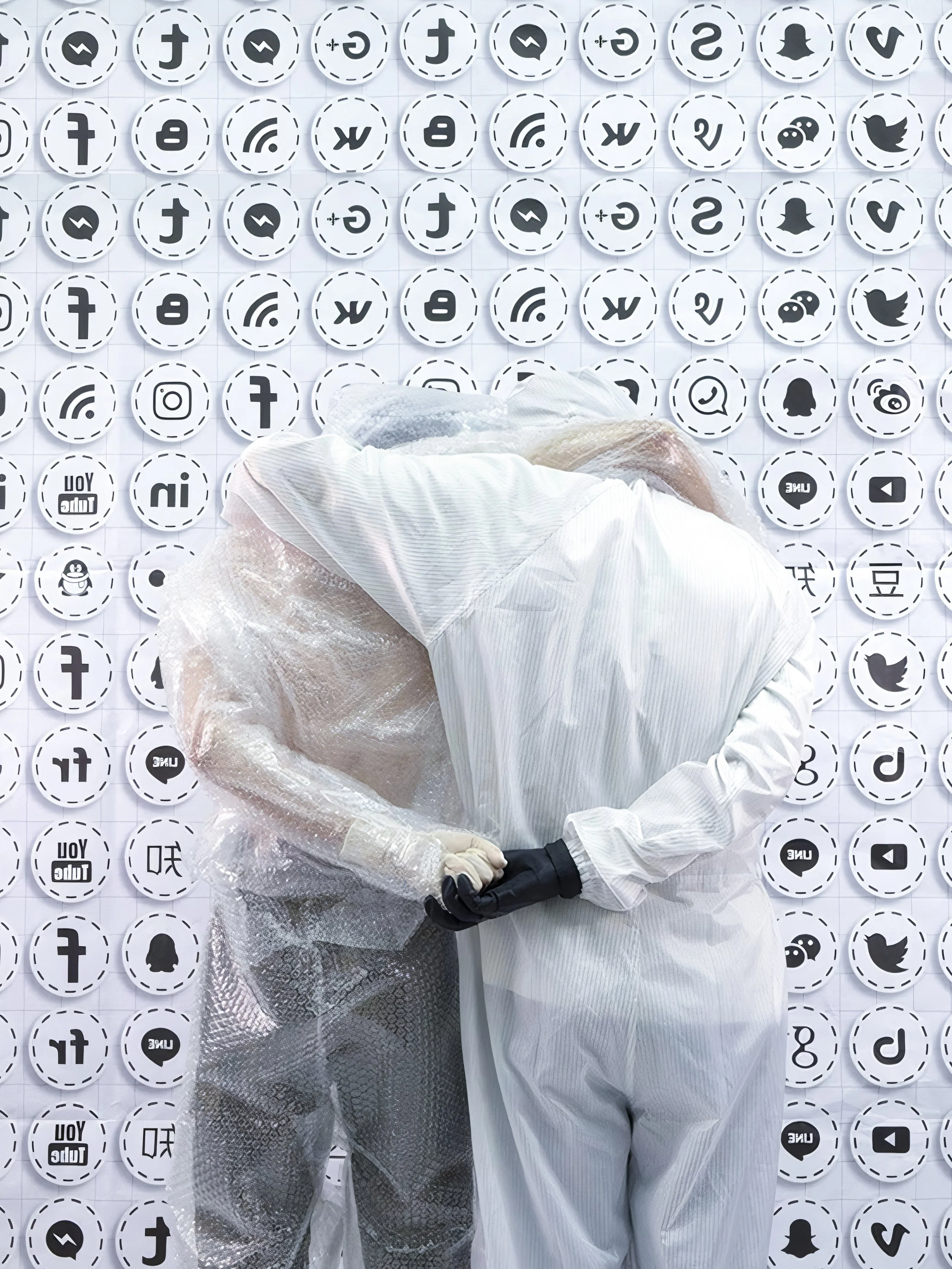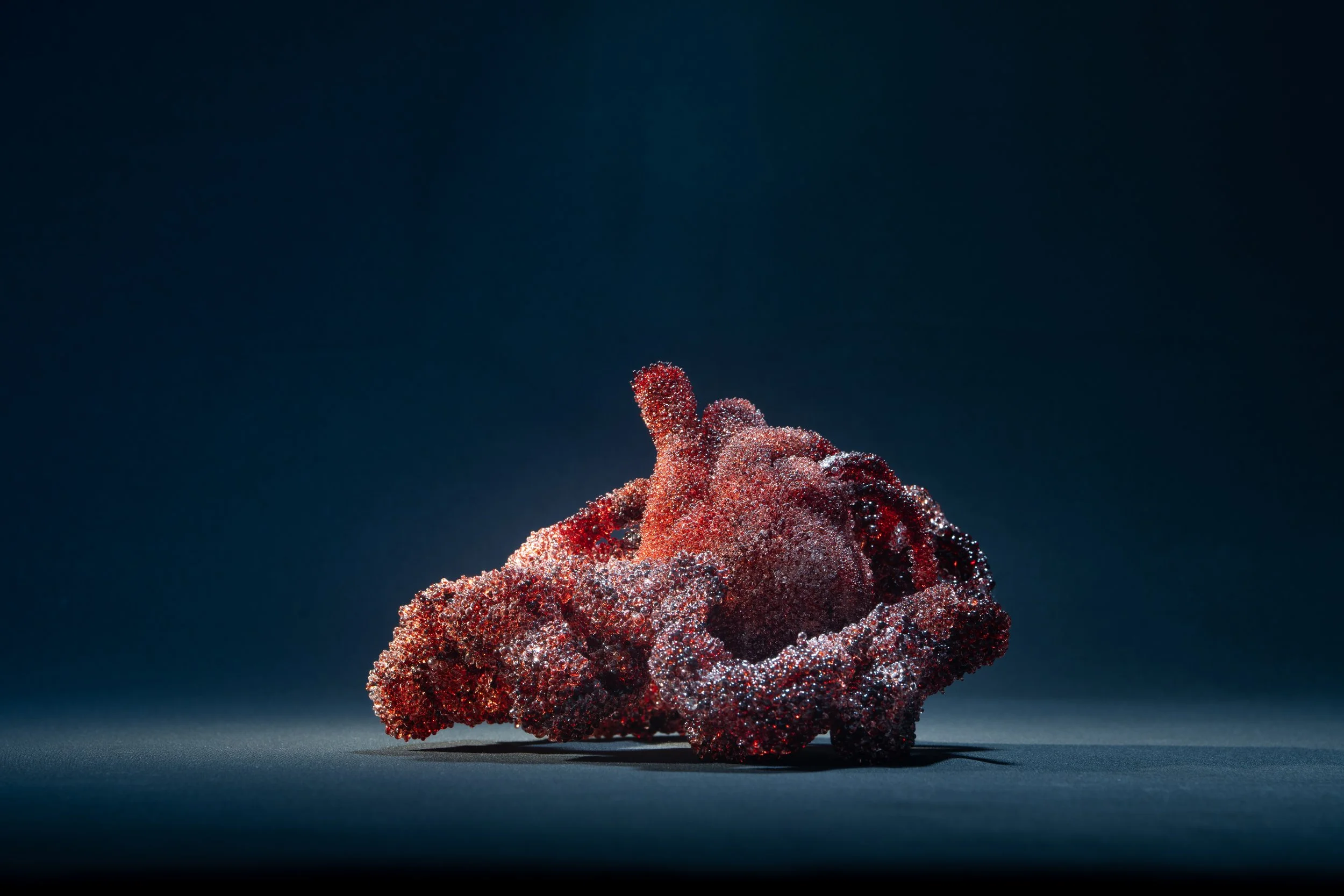10 Questions with Omar Zaki
Al-Tiba9 Art Magazine ISSUE16 | Featured Artist
Born in Italy and raised in Cairo, Omar Zaki had a passion for fine arts from a young age. He completed his university studies in marketing and international management and continued his work as an artist and sculptor. Over the years, he developed artistic skills in sculpture by working in private sculpting studios in Giza, Egypt. Zaki's practice is influenced by reflection, self-exploration, and the continuous search for human nature while simultaneously being adamant to refine his skills and techniques in sculpting. Zaki's earlier works (2019) exude a spiritual influence, characterized by their simplicity, minimalism, and absence of extraneous noise, all features that are deeply centered within the act of prayer. Omar exhibited his artwork for the first time in 2019 at the Youth Salon exhibition organized by the Ministry of Culture. He then showcased his work in many local exhibitions, including Circle 2020, a group exhibition from Gallery Ubuntu (Cairo Art Fair 2020), an exhibition at TAM Gallery, the Agenda Exhibition at the Alexandria Library (2021), Farouk Hosni Youth Competition 2021, and the Youth Salon 33rd edition titled An Introspective. A solo art exhibition was also held at Ubuntu Gallery. His artworks were finalists at Art Revolution Taipei 2021, in the capital of Taiwan.
Omar Zaki - Portrait
ARTIST STATEMENT
As a sculptor, Omar Zaki is constantly inspired by the human form and the beauty of nature. His work reflects his deep connection to the world around him, and he strives to capture the essence of emotions and energy in each piece. Through the use of various materials and techniques, he aims to create sculptures that evoke a sense of wonder and introspection in the viewer. Omar's art is a celebration of the human spirit and a testament to the power of creativity to transcend boundaries.
Qiyam قيام, Travertino Marble, 13x22x65 cm, 2023 © Omar Zaki
AL-TIBA9 ART MAGAZINE ISSUE16
INTERVIEW
Let's talk about yourself first. You were born in Italy and raised in Cairo. How did your Italian roots and Egyptian upbringing shape your artistic perspective?
Thank you for inviting me to this interview. I'm truly flattered by your interest in my work. It's a pleasure to have the opportunity to discuss my sculptures and share my artistic vision with you.
Born in Pietrasanta, Italy, and raised in Cairo, Egypt, my artistic perspective has been profoundly shaped by the confluence of these two rich cultural heritages. Growing up in a city renowned for its artistic traditions and surrounded by the works of renowned fine artists, I was immersed in a world of creativity from a young age.
My Italian roots have significantly influenced my artistic sensibility. Tuscany's artistic heritage, with its emphasis onvisual beauty and social appreciation, has been a constant source of inspiration. The shared experiences of creating with my Italian grandfather in his workshop, using various materials and tools, fostered my early love of hands-on artistry.
While Egypt offered a different environment, I found surprising parallels between the cultural themes of both countries. The sheer scale of Egyptian artworks, from the pyramids to the ancient temples, was awe-inspiring. Frequent visits to museums and historical sites, facilitated by my family's travels, deepened my appreciation for the power of art to transcend cultural boundaries.
As a child, I may not have consciously recognized the impact of these experiences, but they were shaping my artistic vision. The visual stimuli, the stories I heard, and the multicultural interactions I encountered all contributed to a growing awareness of art's ability to communicate and evoke emotions. The craftsmanship and strategic thinking behind the creation of art, as well as its inherent significance, fascinated me. Despite the contrasts between Italian and Egyptian cultures, I discovered a common thread: the universal language of art that requires no translation.
While language posed a challenge for me growing up, I found solace and fulfillment in the visual arts. Through art classes, visits to museums, and my own explorations, I developed a deep appreciation for the power of artistic expression. While I didn't initially envision a career in art, the cumulative experiences of my childhood and adolescence ultimately led me to pursue this path.
3ahd دهع, Bronze, 45x27x33 cm, 2023 © Omar Zaki
How did your marketing and international management studies contribute to your journey and growth as an artist and sculptor?
Initially, I pursued marketing and international management as a practical career path, but I soon realized its potential to enhance my artistic journey. These studies equipped me with invaluable skills that have proven instrumental in my growth as a sculptor.
The entrepreneurial mindset I cultivated during my studies has been essential in navigating the often unpredictable art world. I've learned to approach my artistic practice with a proactive and strategic approach, from setting prices to managing projects efficiently and building strong relationships. This has allowed me to secure fair collaborations and pursue my artistic vision with more confidence.
While my artistic vision is rooted in my personal passion, I've always been aware of the business side of being an artist. I believe the knowledge I gained from my studies has allowed me to balance my creative pursuits with the practical realities of the art market.
When did you first realize you wanted to be an artist? And what inspired your decision to pursue sculpture as your primary career?
My passion for art was ignited at a young age, growing up in a family where creativity was celebrated. Witnessing my father's artistic journey, from a career switch to his own thriving art practice, was a profound inspiration. Together, we embarked on numerous artistic endeavors, attending prestigious events like the Venice Biennale and many more. These experiences nurtured our shared appreciation for art and strengthened our father-son bond.
Beyond technical skills, my father's mentorship provided valuable insights into the world of art. His guidance allowed me to explore different mediums and techniques, fostering a sense of experimentation and confidence.
A turning point came when my personal artworks were selected as a finalist in a national exhibition. This recognition validated my artistic abilities and opened doors to galleries and exhibitors. It was during my final year of university that Irealized my hobby could potentially evolve into a fulfilling career.
The decision to pursue sculpture as my primary career was influenced by several factors: the overwhelming support I received, my father's successful example, and the relative experience I had gained in the field. Taking this leap of faith was a risk, but one that I was eager to embrace.
Da’ei داعي, Bronze, 15x30x46 cm, 2019 © Omar Zaki
Mudawi مداوي, Bronze, 24x22x35 cm, 2020 © Omar Zaki
On the same note, why did you choose sculpture specifically? What does this medium represent for you?
I'm drawn to the nostalgic process of sculpting, from the feel of the material to the satisfaction of creating a tangible object. It's a way for me to honor my heritage, connect with my family's craftsmanship, and contribute to a legacy that will endure through time.
Sculpture is more than just a medium; for me, it's a vehicle for expressing my deepest emotions, connecting with the past, and leaving a lasting mark on the world.
Speaking of your work, can you describe your creative process from initial concept to final piece when beginning a new sculpture?
My creative process is a dynamic and often unpredictable journey. Each sculpture begins with a deep exploration of the subject matter, often involving countless sketches and studies. This preliminary work allows me to understand the form and its nuances from various angles, fostering a symbiotic relationship between me and the subject.
While there are moments of structured planning, particularly evident in my recent solo exhibition, improvisation often plays a significant role. The process is one of discovery, experimentation, and evolution. I find that by embracing mistakes and setbacks, I am able to delve deeper into the heart of the piece.
Clay serves as a malleable medium for initial experimentation, allowing me to refine the form and composition. However, when I feel confident in the design, I transition to plaster. Its white color provides a clear and objective view of the surface, making it easier to identify areas for refinement. Moreover, plaster's durability and ability to withstand environmental factors make it a suitable choice for preserving the sculpture's integrity.
The final stage involves selecting the appropriate material for the finished piece. This decision is influenced by factors such as the desired aesthetic, durability requirements, and the nature of the subject matter. Whether it's the timeless quality of bronze, the classic elegance of marble, or the versatility of other materials, the choice ultimately serves to enhance the sculpture's impact and longevity.
Taqyim مييقت, Bronze, 24x21x37 cm, 2023 © Omar Zaki
As you mention in your statement, your earlier works are known for their spiritual influence and minimalism. How do these themes continue to influence your current projects?
My earlier works, rooted in themes of hope, faith, and a desire for a better world, were born out of the shared challenges of the COVID-19 pandemic era. The act of prayer, as a universal gesture of hope and connection, became a central motif in my minimalist sculptures. By stripping away extraneous elements, I aimed to create works that resonated deeply with audiences, transcending specific religious or cultural boundaries.
While these themes continue to inform my current projects, I'm also exploring new avenues of expression. Through experimentation and self-discovery, I'm seeking to expand my artistic vocabulary and communicate my evolving ideas in fresh and innovative ways. My ongoing goal remains to create works that inspire, provoke thought, and contribute to a more hopeful and equitable future.
What are your main sources of inspiration, and how do you incorporate them into your sculptures?
My sculptures are deeply influenced by the timeless imagery of praying figures. This theme has provided a rich source of inspiration, allowing me to explore concepts of faith, spirituality, and human connection. These are also themes that have been explored by artists throughout history, and I've always been drawn to the power and emotion they evoke.
The exploration has been a constant thread throughout my artistic journey. I've drawn inspiration from various religious traditions, but my goal is to create works that resonate with individuals on a universal level, whether through their spiritual significance, emotional impact, or aesthetic appeal. By combining these elements, I hope to create works that are both timeless and contemporary.
I'm particularly interested in how these concepts can be conveyed through the use of natural materials, such as marble, which has a raw and elemental quality that complements the spiritual nature of such work. I also believe that the human touch adds a unique depth and authenticity to each artwork.
Jales سلاج, Bronze, 17x22x33 cm, 2019 © Omar Zaki
Nadam ندم, Bronze, 25x30x30 cm, 2022 © Omar Zaki
You work with both marble and bronze. How does your work change depending on the material you use? Do you find one more suitable for your practice than the other?
The choice between marble and bronze is a delicate dance between the sculptor and the artwork. Marble is a testament to the artist's touch. Each piece is a unique creation, shaped by my own hand and the inherent qualities of the stone. Its color, hardness, and the subtle effects it reveals all contribute to the final expression. I am particularly drawn to the renowned Statuario marble, a classic choice for many great artists, and with its source quarries near my hometown, I feel a deep connection to this material.
Bronze, on the other hand, offers a different kind of flexibility. Casted by skilled artisans, it allows for greater freedom in finishing and modification, thanks to the techniques of welding. The wide range of patinas available also provides endless possibilities for color and texture. While marble is a one-of-a-kind creation, bronze can be reproduced in limited editions, ensuring its accessibility and durability.
Initially, I began my artistic journey with bronze, using it as a means to explore and refine my ideas. Over time, I developed a profound respect for the art of stone carving and began to replicate my bronze works in marble. This process allowed me to master the techniques of this ancient craft while honoring the unique qualities of each material.
Ultimately, my choice of material is driven by the specific demands of the project. Whether it's the elegance of marble or the versatility of bronze, I strive to select the medium that best compliments my vision and brings my sculptural ideas to life.
Looking ahead, are there any new themes or materials you are excited to explore in your upcoming projects?
I'm deeply drawn to exploring the intersection of spirituality, the human form, and the natural world in my upcoming works. I envision delving deeper into themes of transcendence and introspection, using scale and exaggeration to evoke powerful emotions.I'm particularly excited about further experimenting with stone carving techniques. The tactile nature of working with stone aligns perfectly with my desire to create pieces that invite physical interaction. By studying the human body in greater detail, I hope to distill its essence into simplified forms that convey a profound personal connection.
As for new materials, mosaic has captured my imagination as a fascinating medium. Its blend of painting and stonework offers a unique opportunity to explore color, texture, and pattern in a way that is both visually stunning and intellectually stimulating. I'm particularly drawn to the mosaic's potential to create intricate patterns and designs that can be both abstract and figurative.
I believe that by combining mosaics with my existing sculptural techniques, I can create innovative works.
Nadam ندم, Bronze, 25x30x30 cm, 2022 © Omar Zaki
And lastly, what can we look forward to in terms of future exhibitions or collaborations, and how do you envision your work evolving in the next few years?
My artistic journey is a constant evolution. As I look ahead, I envision a multifaceted approach to my work. I am committed to my homeland and plan to continue exhibiting my creations there, regardless of my physical location. Beyond Egypt, I am actively seeking opportunities to collaborate with artists and audiences in neighboring MENA countries, drawn to our shared cultural heritage and the vibrant art scene.
My current residence in Barcelona has been incredibly inspiring, and I am excited to incorporate the city's unique influences into my evolving artistic style. In terms of future projects, I am particularly interested in participating in international stone sculpture symposiums. These events offer invaluable opportunities for growth, as I can practice working with large-scale sculptures and learn from diverse artists and cultures.
Ultimately, my goal is to create work that transcends borders and resonates with audiences worldwide. By blending the influences of my experiences with my artistic background, I hope to continue creating sculptures that inspire, engage, and leave a lasting impression.


























